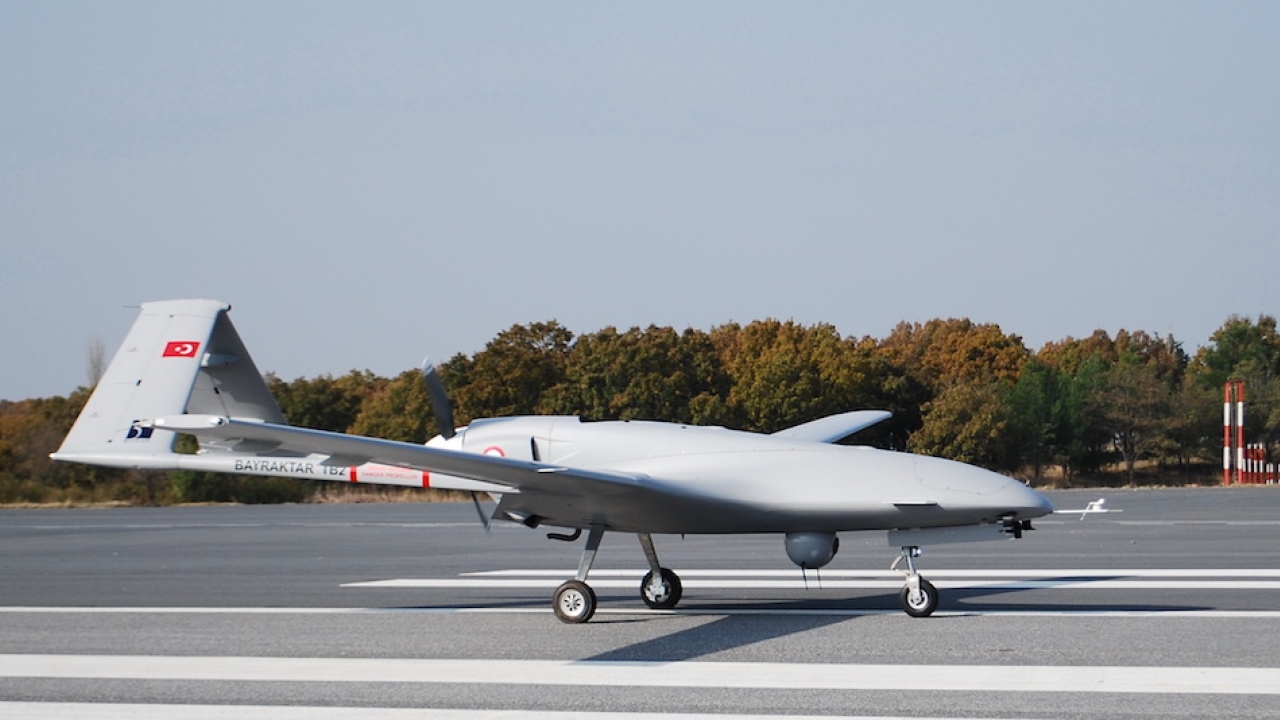Morocco and Egypt build up their strength
As Morocco places an emphasis on unmanned systems, Egypt’s Air Force is also embracing new weapons capabilities.

The Turkish-made Bayraktar TB-2 armed MALE UAV. Picture: Bayraktar.
Morocco is currently strengthening and modernising its air power capabilities and developing relationships with partner nations in response to growing tensions in Western Sahara and with Algeria.
A key feature has been the purchase of Turkish-made Bayraktar TB-2 armed medium-altitude long-endurance (MALE) tactical unmanned aerial vehicles (UAVs).
A first batch of 13 TB2s (including four ground operation stations) was delivered to the Moroccan Armed Forces (FAR) on September 17 and, two months later, an order for a further six was made.
The initial contract, placed with Turkish supplier, Baykar, in April last year, was worth around $70million.
Reports suggest that Morocco made its first use of a weaponised UAV during an attack on a Polisario convoy in the disputed Western Sahara territory – the self-proclaimed Sahrawi Arab Democratic Republic (SADR) in April last year.
This marked a significant change in the use of UAVs by the Moroccan Air Force. It was reported by local news outlets that the chief of the Polisario gendarmerie, Addah Al-Bendir, had been killed in uncertain circumstances during the attack.
The acquisition of four MQ-9B SeaGuardian UAVs from General Atomics was confirmed in December 2020, prior to the attack. This order included a range of guided munitions, including the AGM-114 Hellfire missile.
Morocco has also set its sights on becoming a UAV manufacturer. A $22 million deal has been signed with Israel Aerospace Industries (IAI) in the wake of the Abraham Accords, which re-established diplomatic relations between the two countries. The arrangements include the purchase of armed UAVs from Israel and may also include the manufacturing of the Harop loitering munition in Morocco.
Meanwhile, in Egypt, the emphasis is now very much on precision strike.
The delivery of Dassault Rafales in July 2015 and the induction of the MiG-29M/M2 in 2017 brought new weapons capabilities, including modern beyond-visual-range (BVR) air-to-air missiles and a raft of new French and Russian air-to-surface weapons, including MBDA’s Scalp cruise missile. This brought a step-change in both air defence and attack capability.
But it is not just Egypt’s 24 new Rafales and 46 MiG-29M/M2s that are delivering these capabilities. The country’s surviving Dassault Mirage 2000s (of 20 originally delivered in 1986-88) have recently received Emirati Al Tariq glide bombs, and may still retain AS30 air-to-surface missiles (ASMs).
The Al Tariq has also been integrated on Egypt’s Lockheed Martin F-16Cs – at least on the most recent Block 52 aircraft.
The Al Tariq is essentially a kit that can be integrated with any Mk 81, Mk 82, Mk 83 and Mk 84 bomb to turn it into a precision weapon. This means that there are some 24 possible Al Tariq configurations, using different seekers, warheads and wing kit options. When fitted with the pop-out wing kit, Al Tariq is claimed to have a range of more than 120km.
Mirage 2000s were first seen carrying Al Tariq weapons during the Qader 2021 exercise in July, and Block 52 F-16Cs were seen equipped with wing-kitted Al Tariqs in a video marking air force day celebrations on October 14.
The F-16s have also been seen carrying AGM-84 Harpoon, and AGM-65A/B/E Maverick ASMs, plus a range of laser-guided and GPS-guided bombs.
A French upgrade, tested in Djibouti, could hold the key to the future for Egypt’s surviving Mirage 2000s.
The Armée de l’Air et de l’Espace (French air and space force) recently completed test flights of two upgraded Mirage 2000Ds that had been given a mid-life upgrade and then deployed to the Base Aérienne 188.
The aircraft carried out a raft of test missions working with the Mirage 2000-5s of Escadron de Chasse 3/11 ‘Corsica’ and the French army forward air controllers (FAC). Support equipment, mission planning and debriefing systems were also tested and assessed as part of the exercise.
During the 20 days of testing, the Experimental Military Aviation Centre (CEAM) team assessed the upgraded aircraft, while the General Directorate of Armament testing (DGA) evaluated the new CC422 cannon pod.
Some of the features of the upgrade could be applied to other operators’ Mirage 2000s, dramatically improving their air-to-ground and close air support capabilities through the addition of new VHF radios, Link 16 datalink, and a ROVER video datalink system.
The new CC422 gun pod contains a DEFA 550 F3 30mm cannon, with a 250-round magazine, and is installed on the left chin pylon below the air intake. This provides a gun for the two-seat Mirage 2000 for the first time.
Stay up to date
Subscribe to the free Times Aerospace newsletter and receive the latest content every week. We'll never share your email address.


